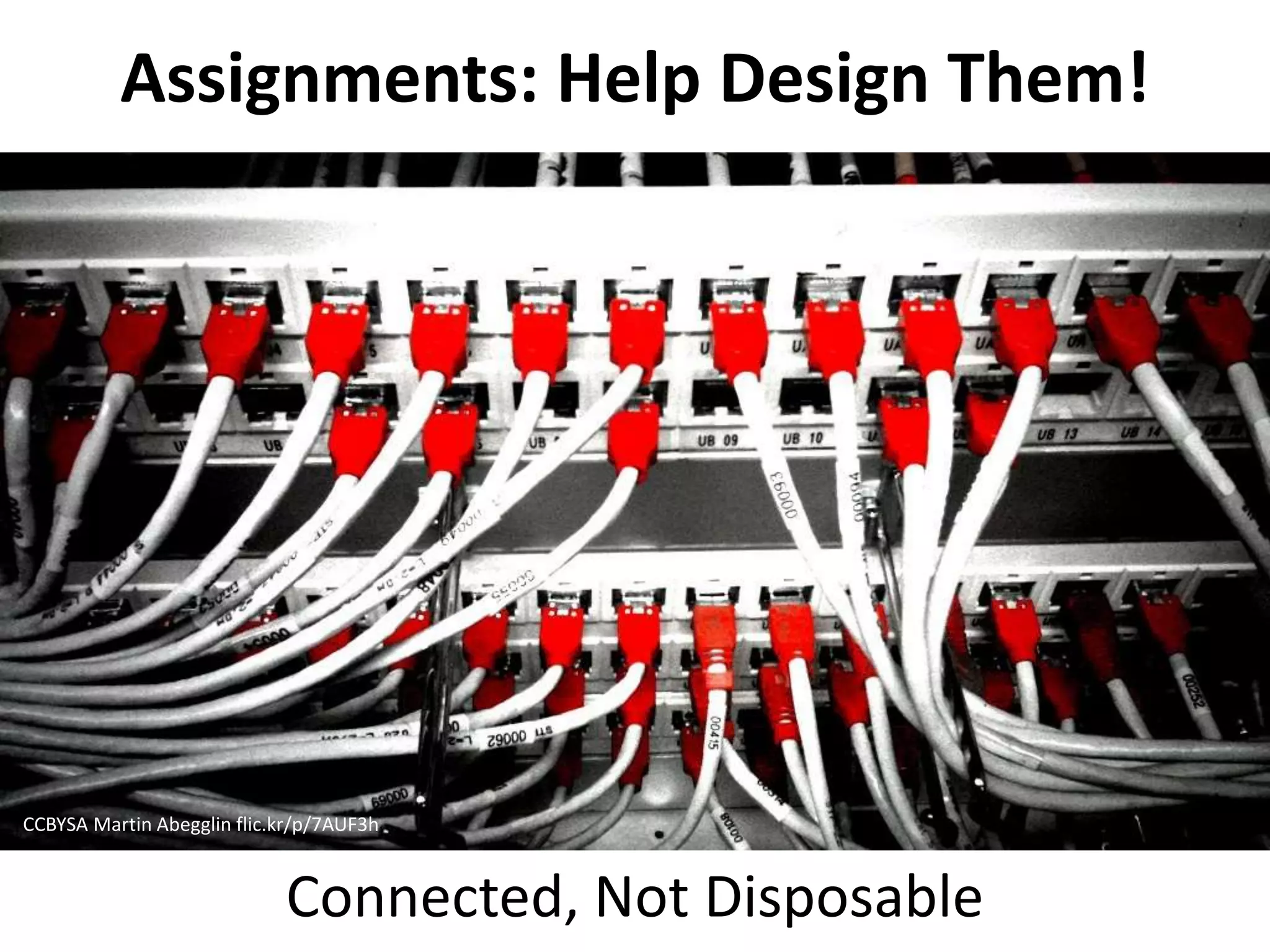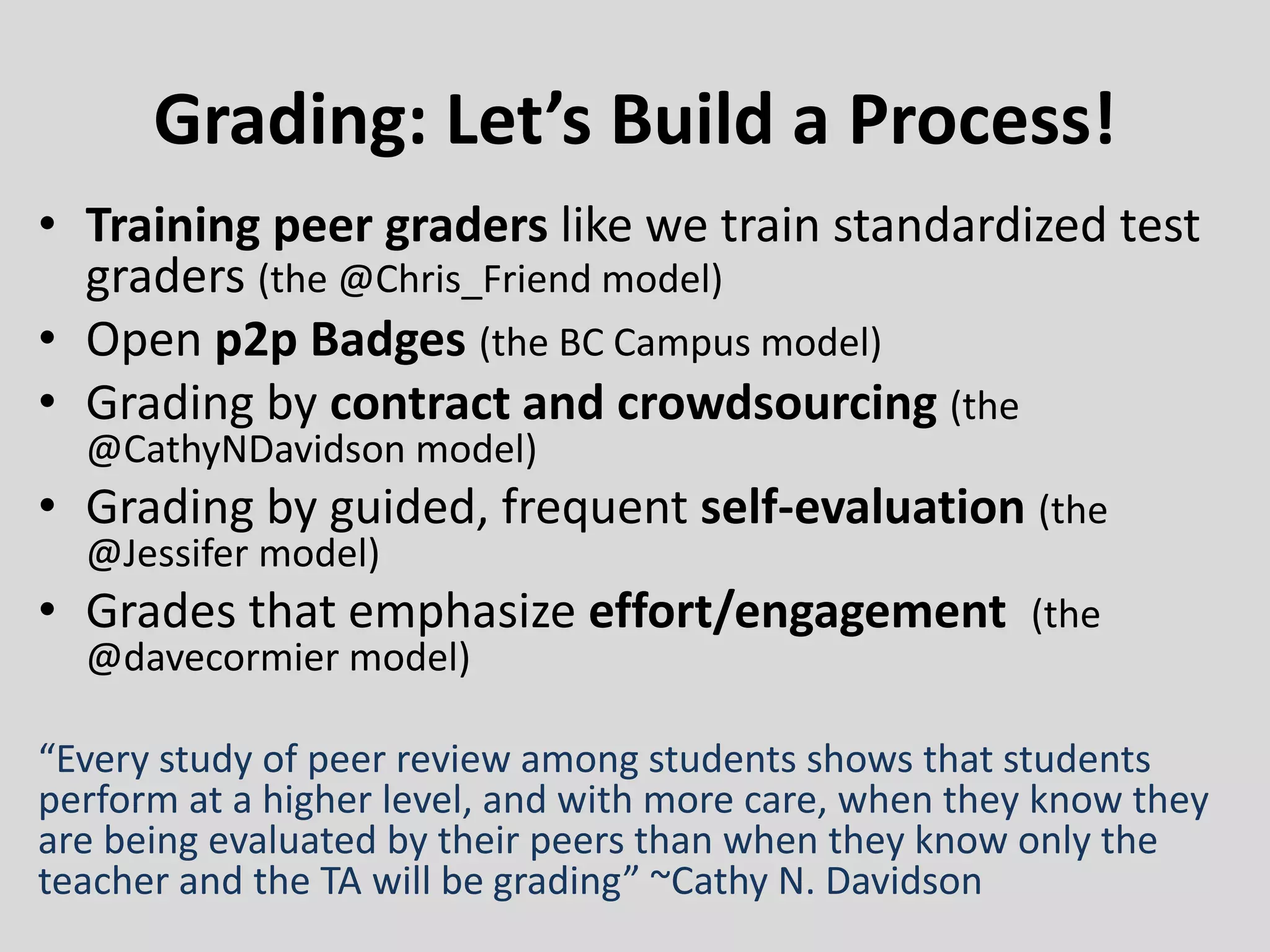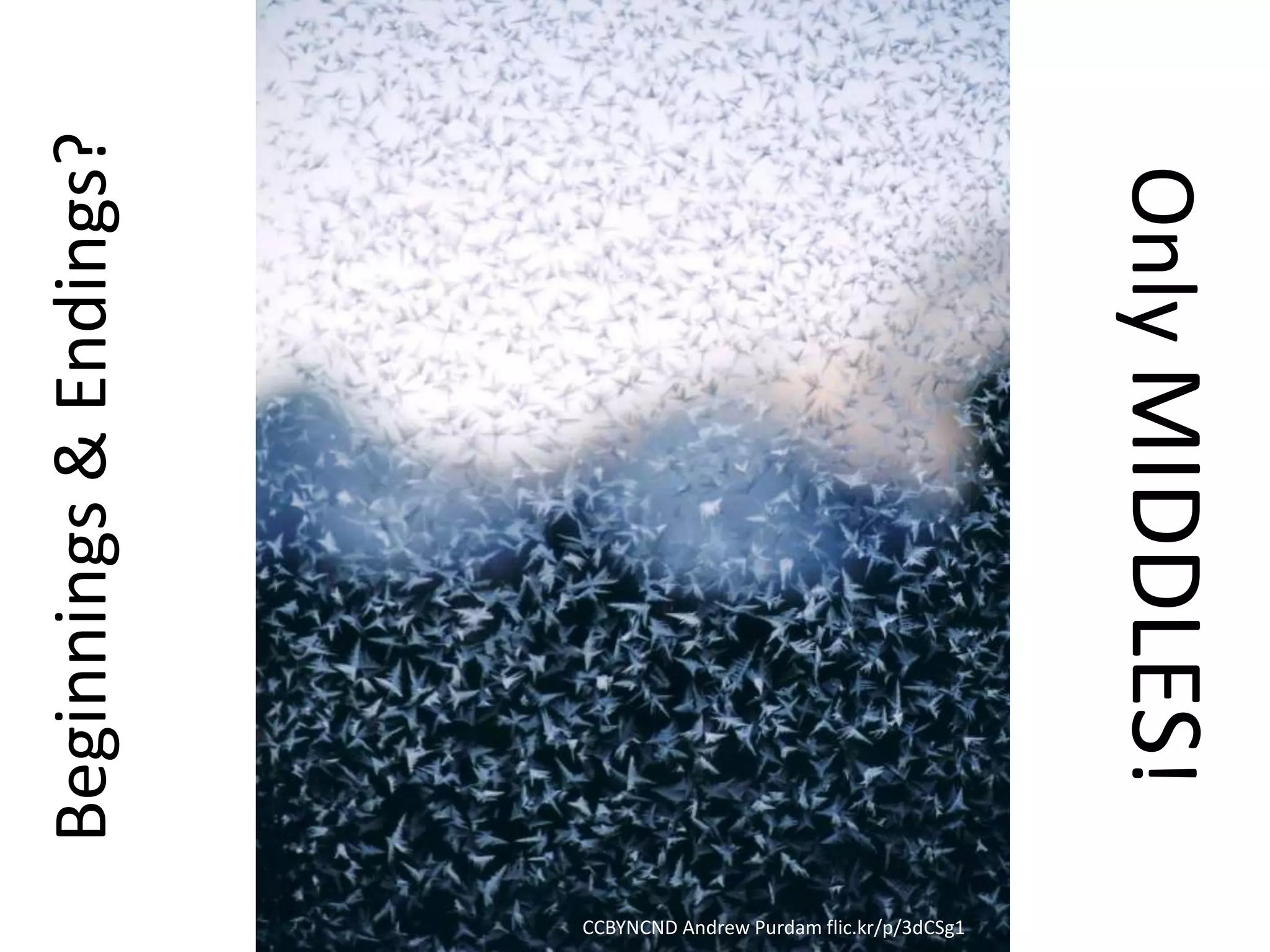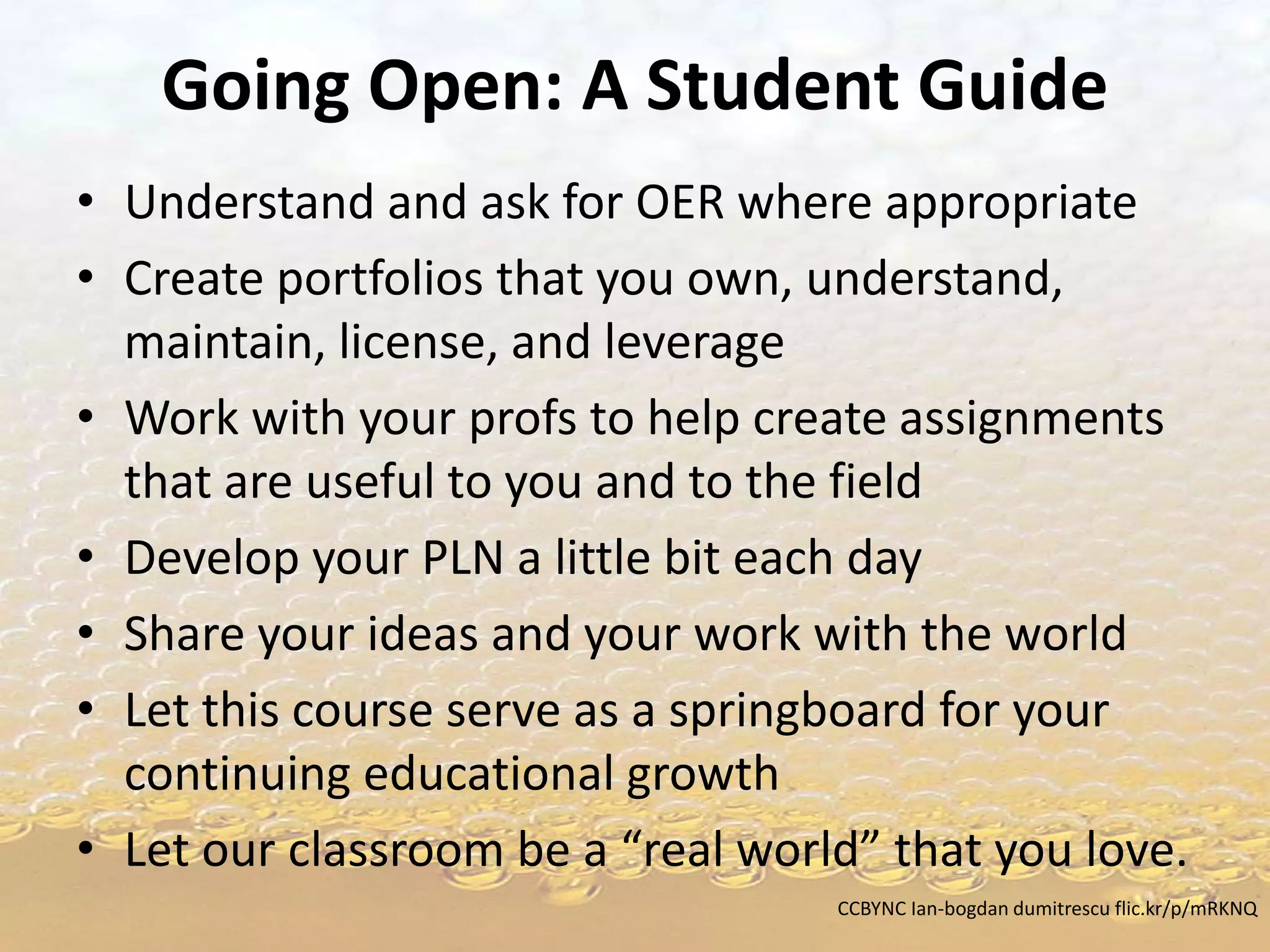1) The document introduces open educational resources (OER) which are teaching, learning, and research materials that can be freely used and modified. OER include full courses, textbooks, videos, and other education tools and materials.
2) It notes that college textbook costs have increased dramatically, rising over 800% since 1978 and 3.2 times the rate of inflation. Using OER can help reduce costs for students.
3) The document advocates for an open pedagogy approach where students collaborate and connect learning beyond the classroom. It suggests rethinking traditional course elements like required texts, schedules, assignments, and grading to take an open and learner-centered approach.
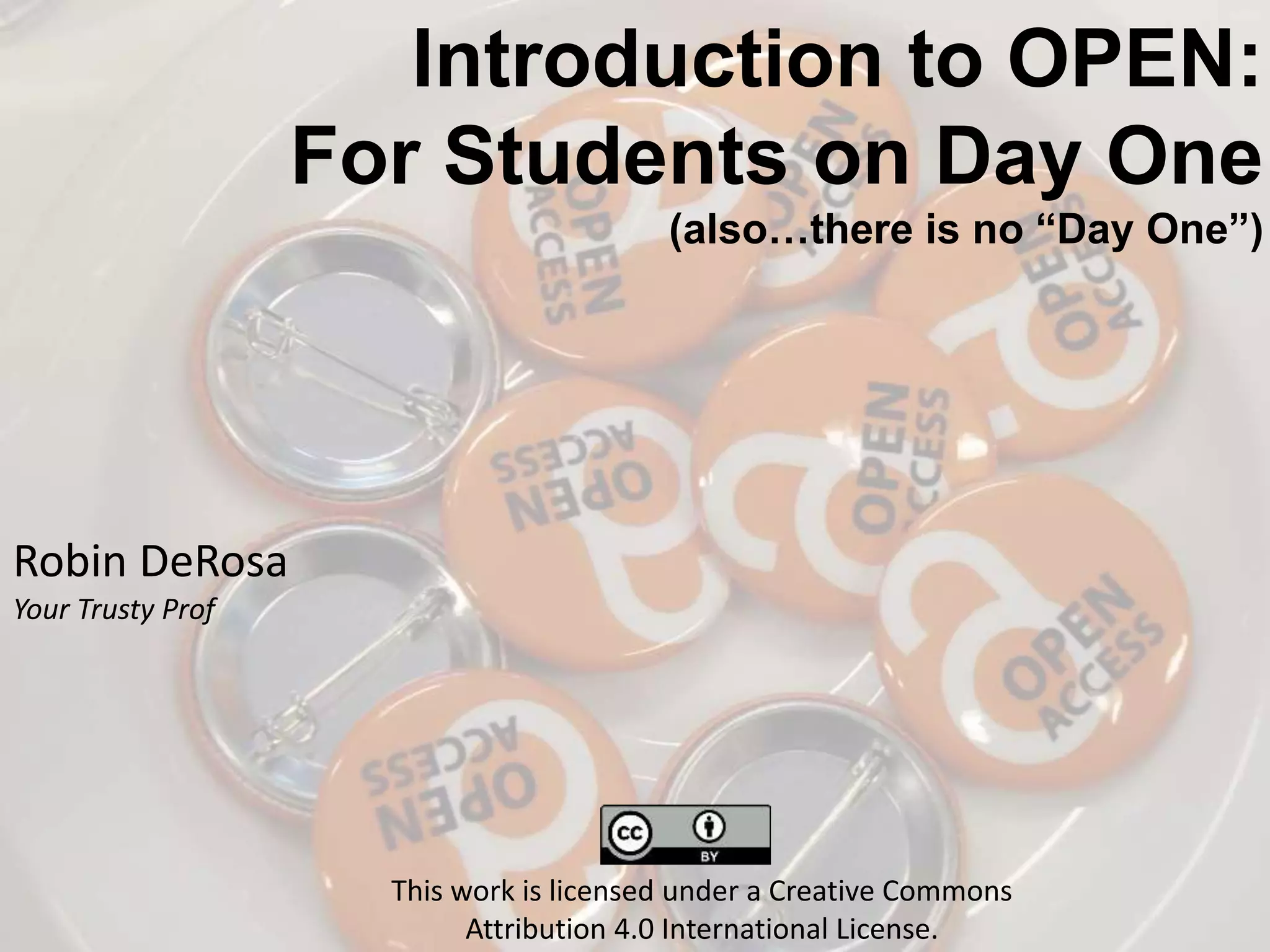
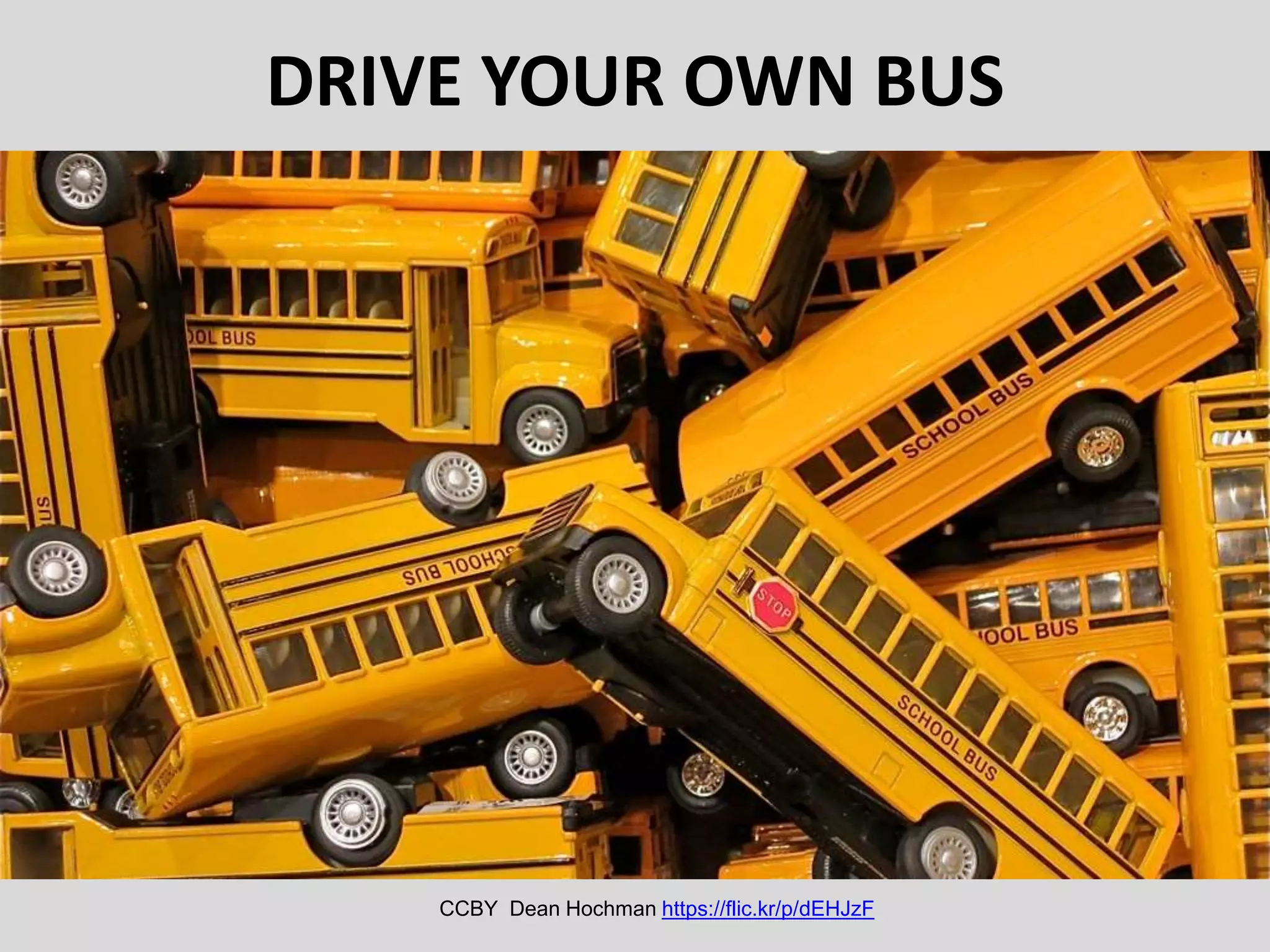
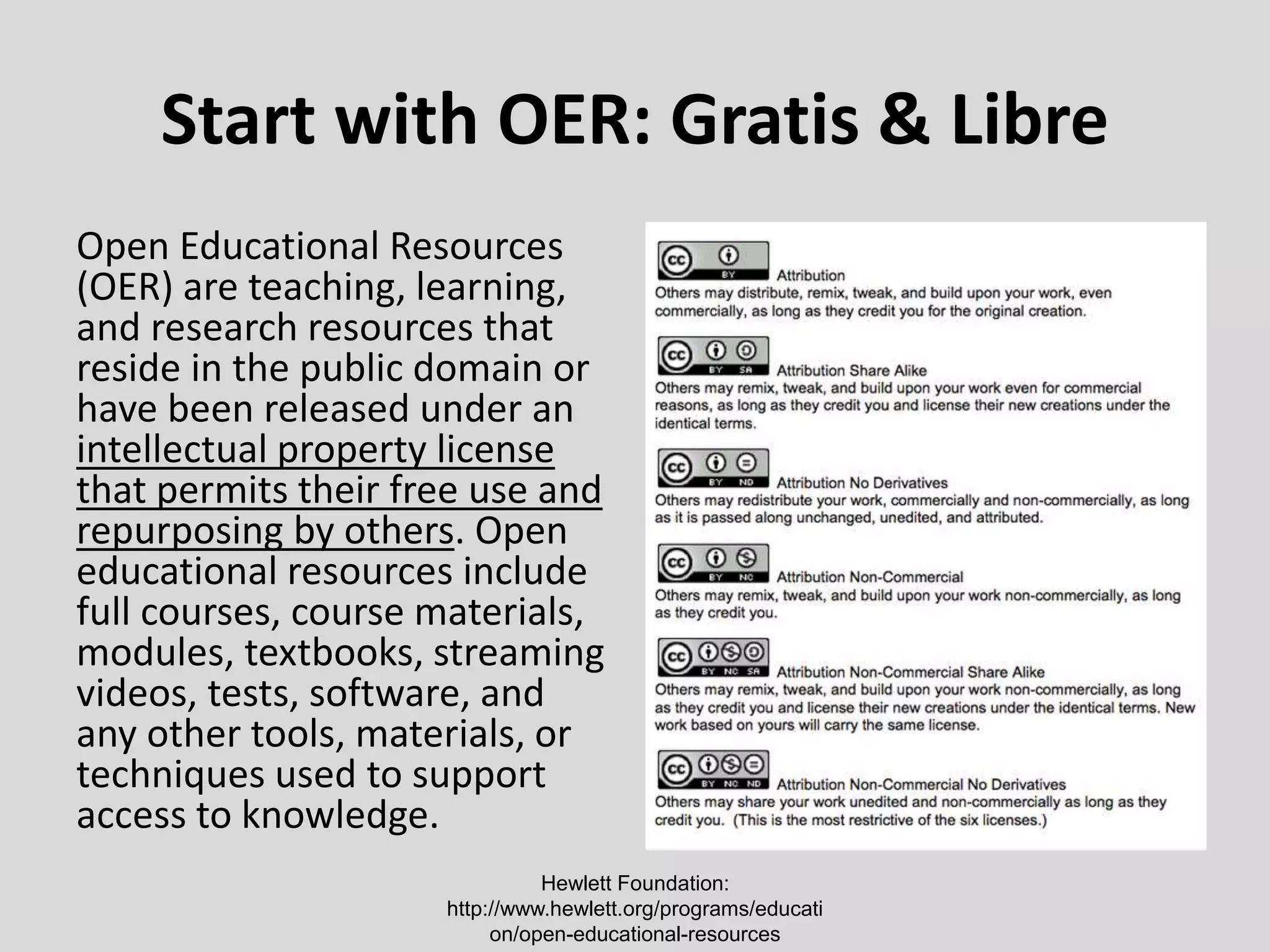
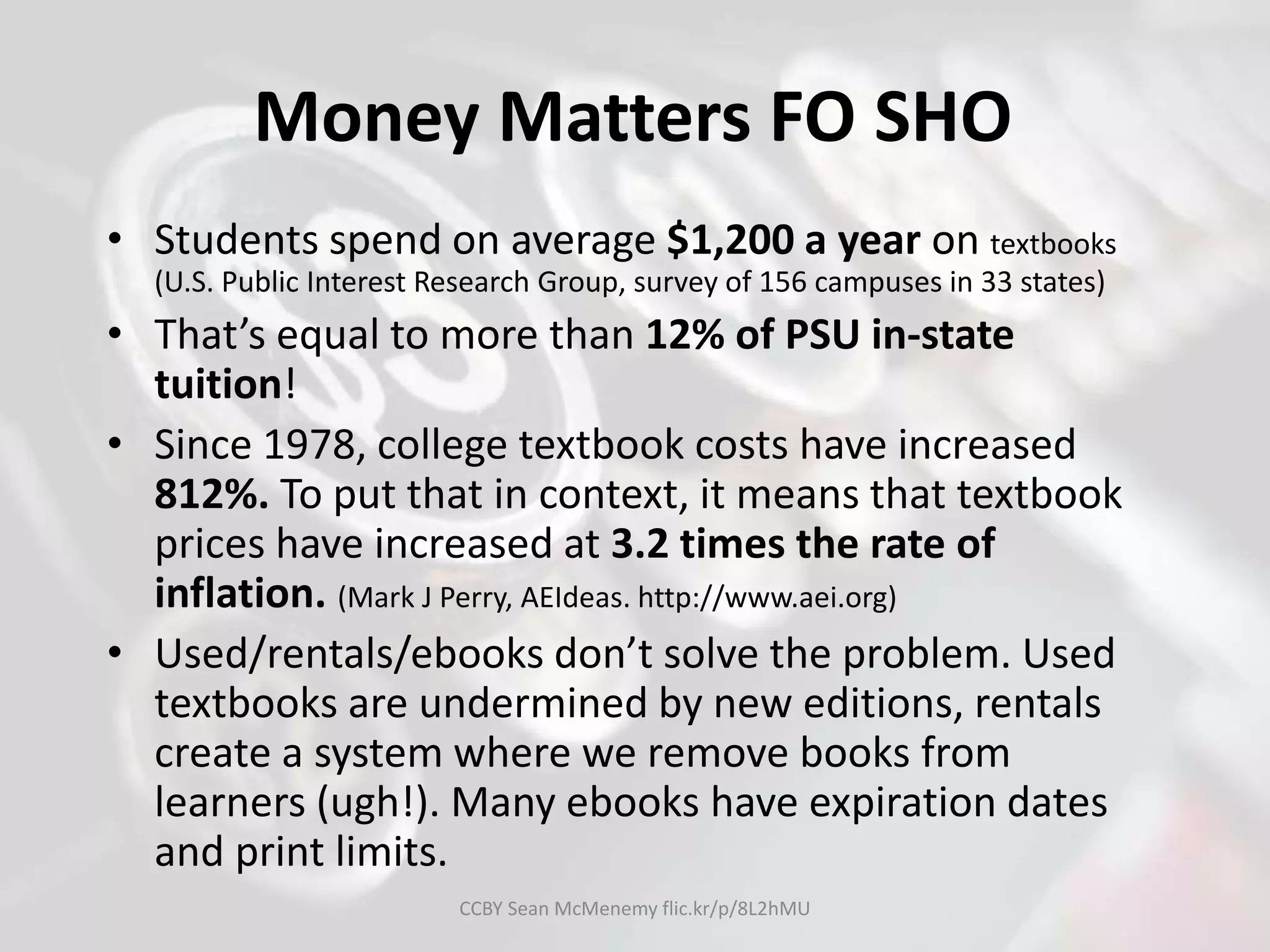
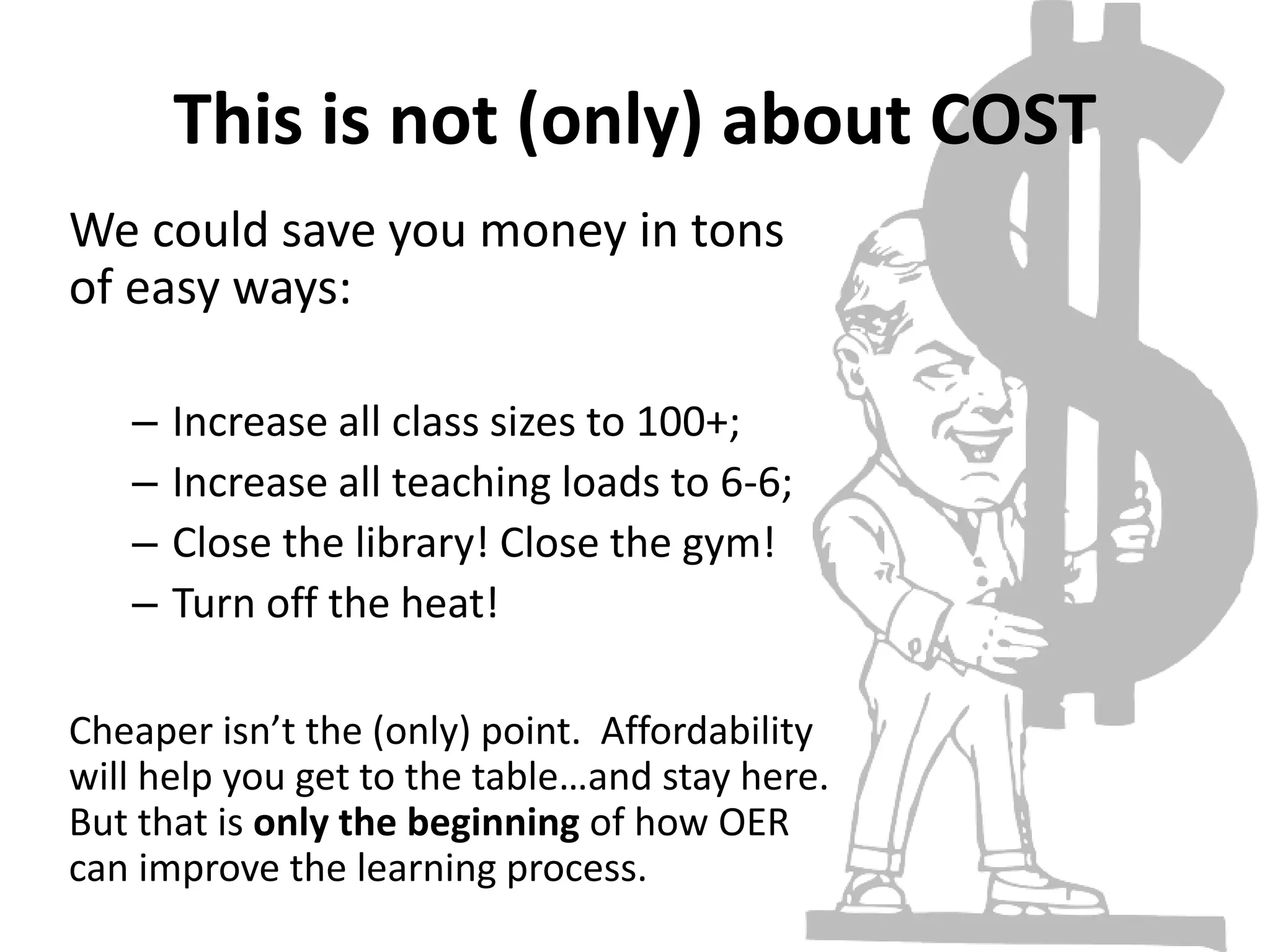
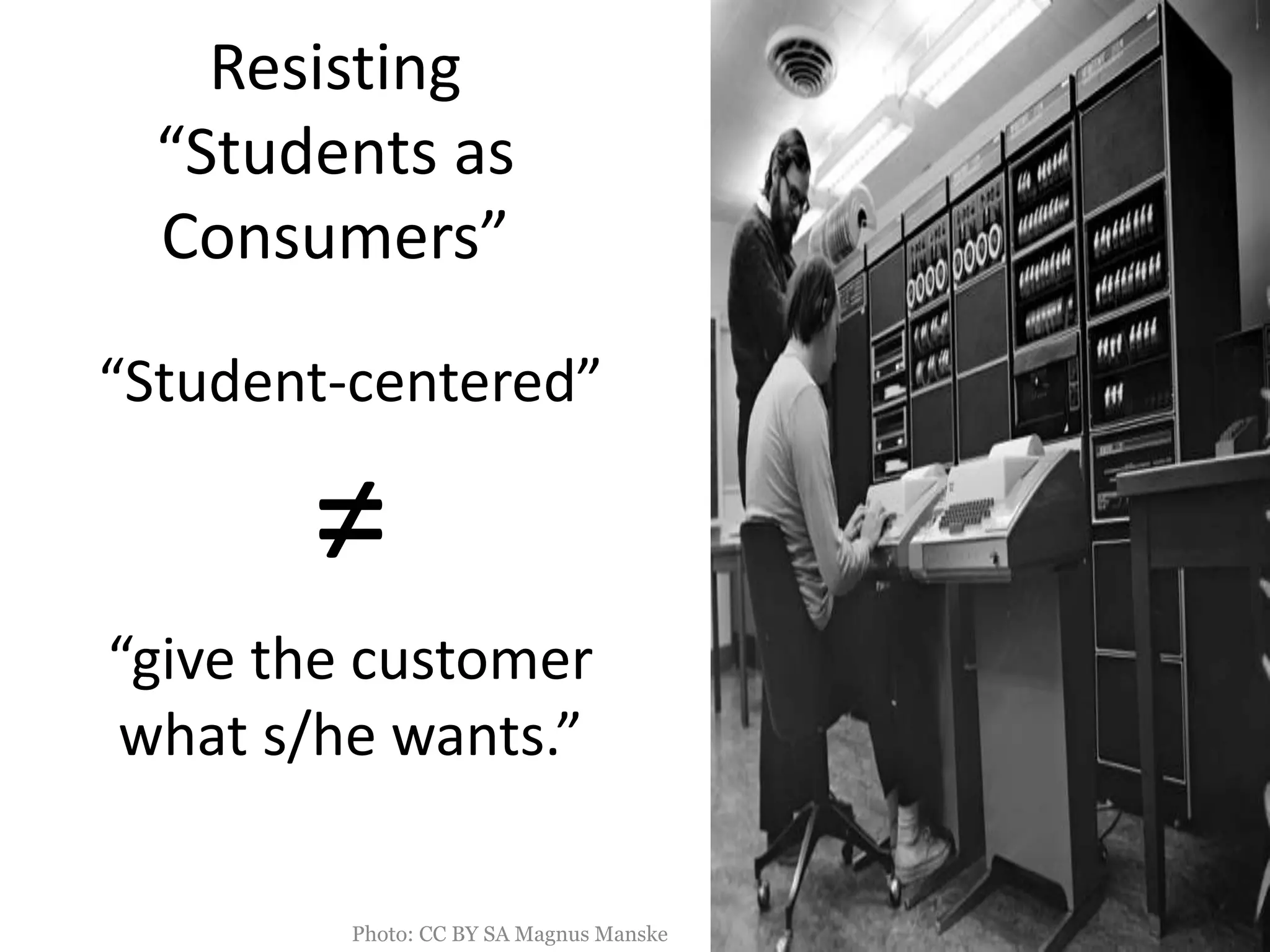
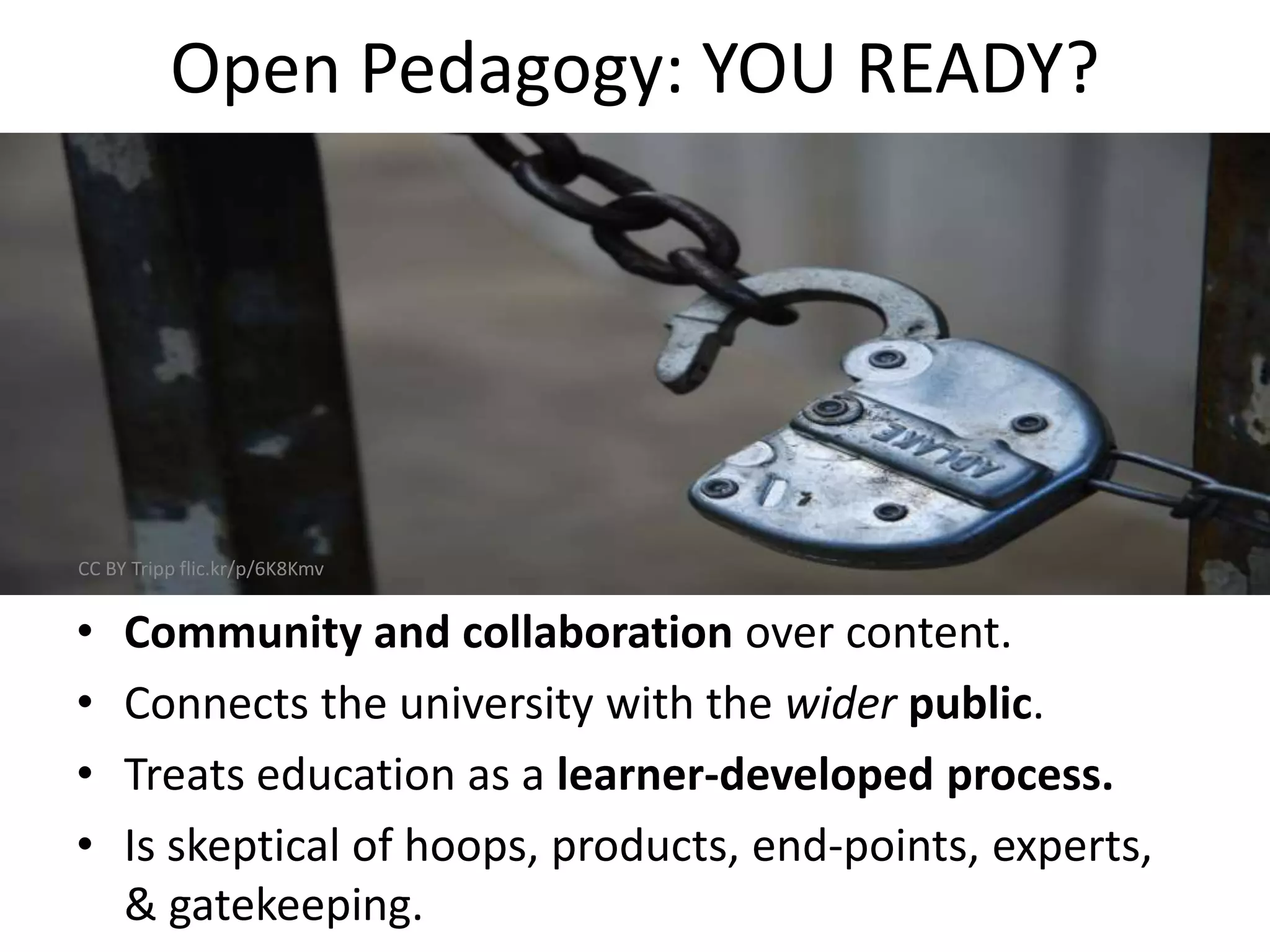
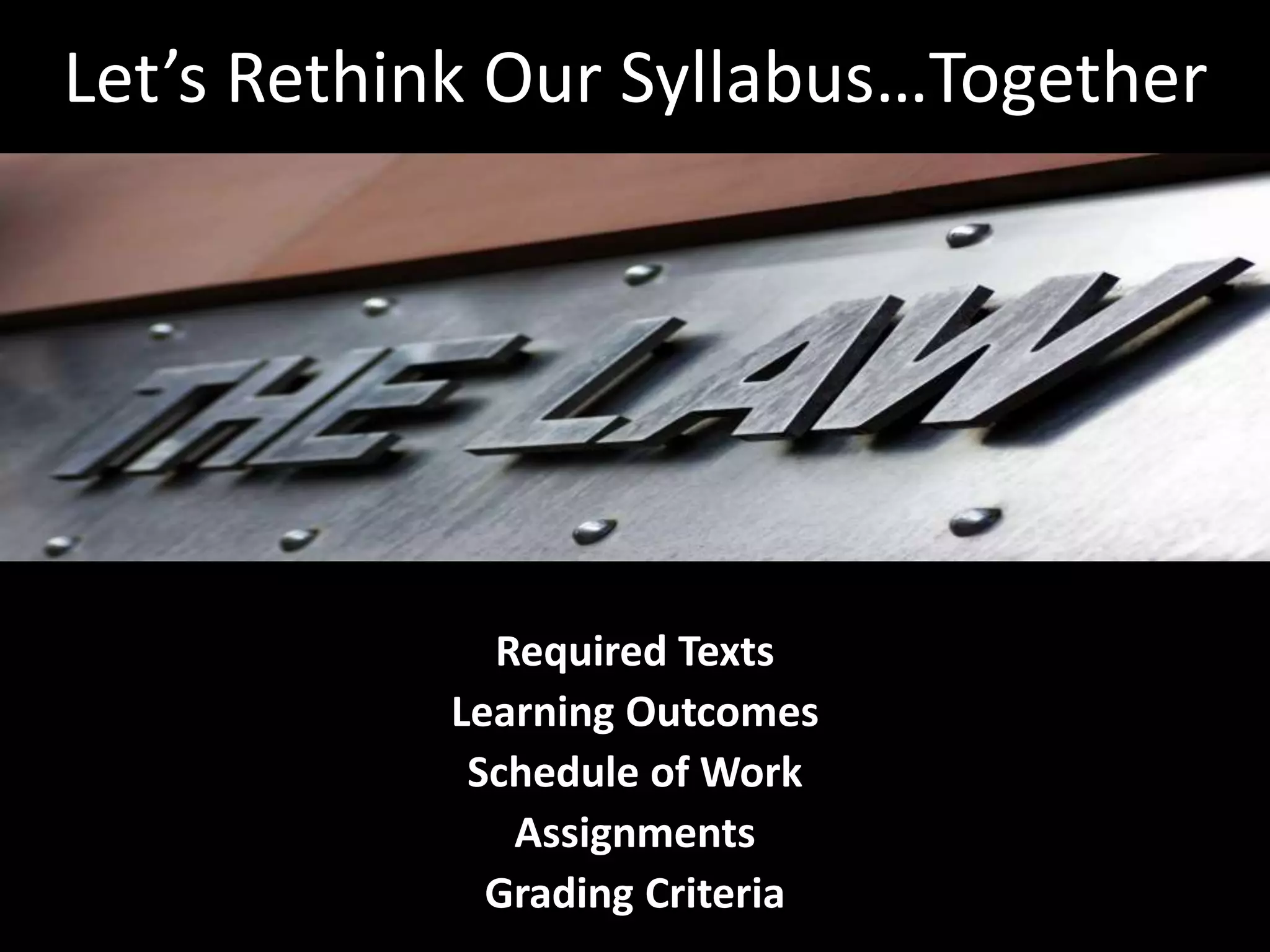
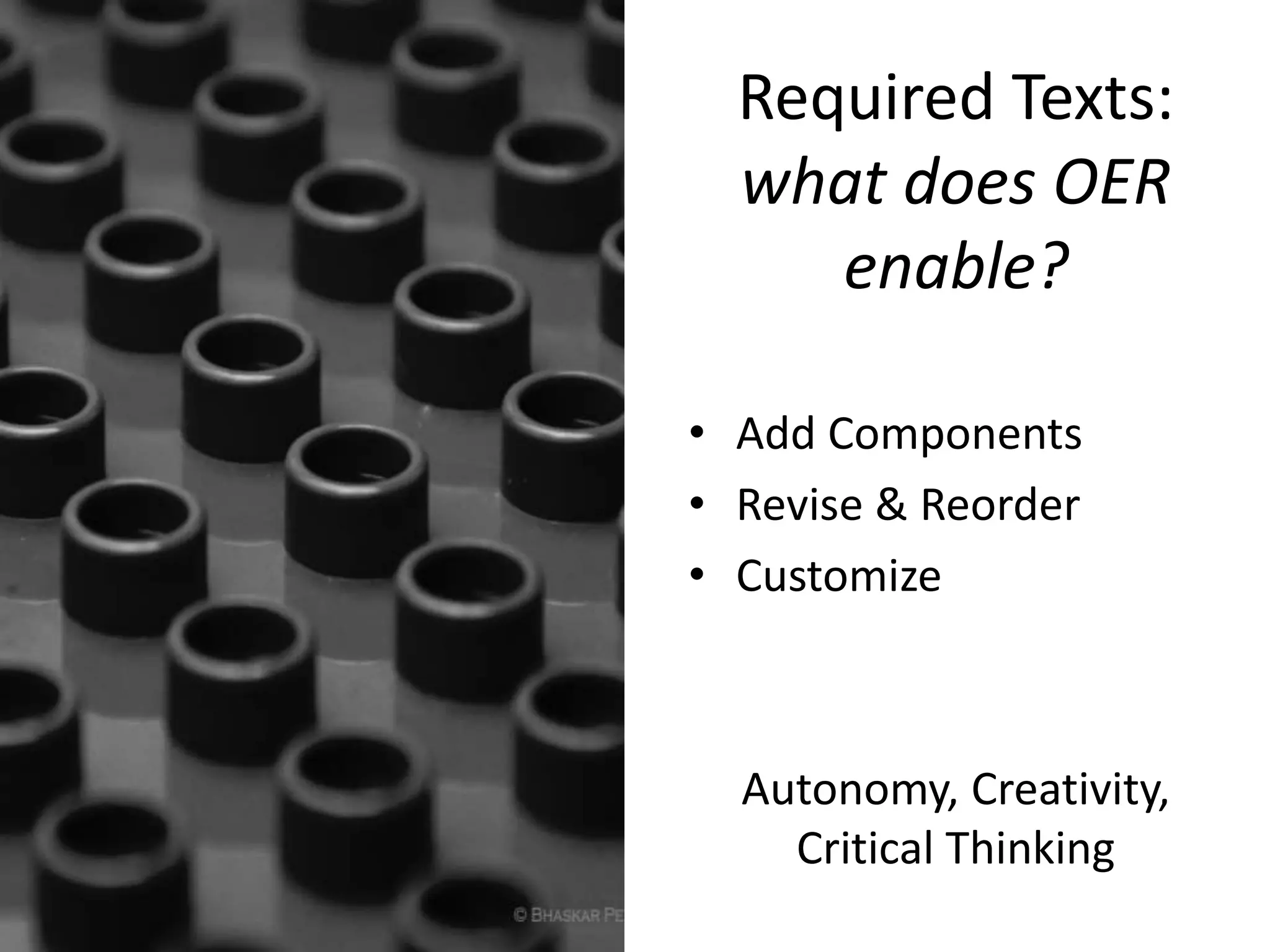
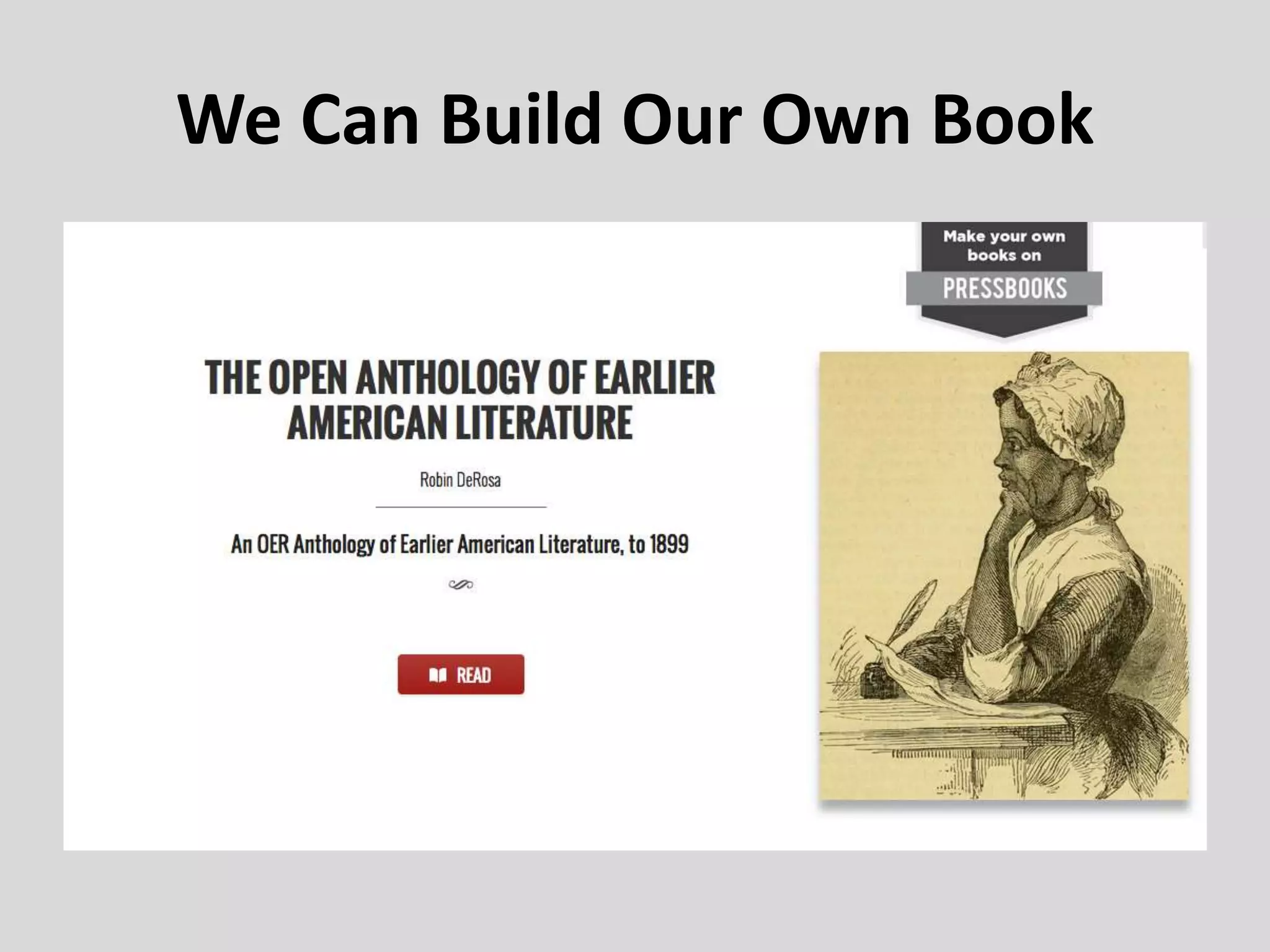
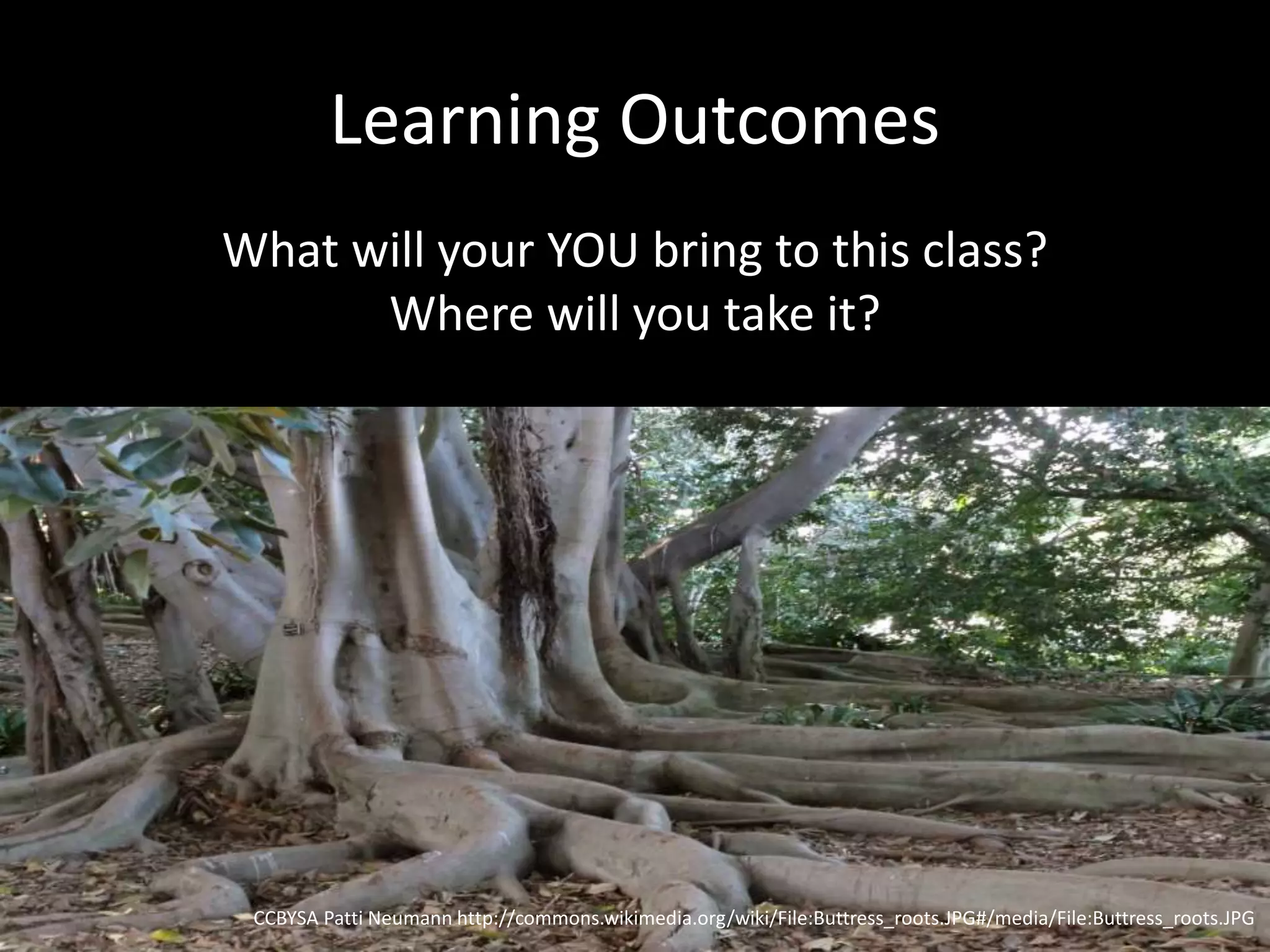
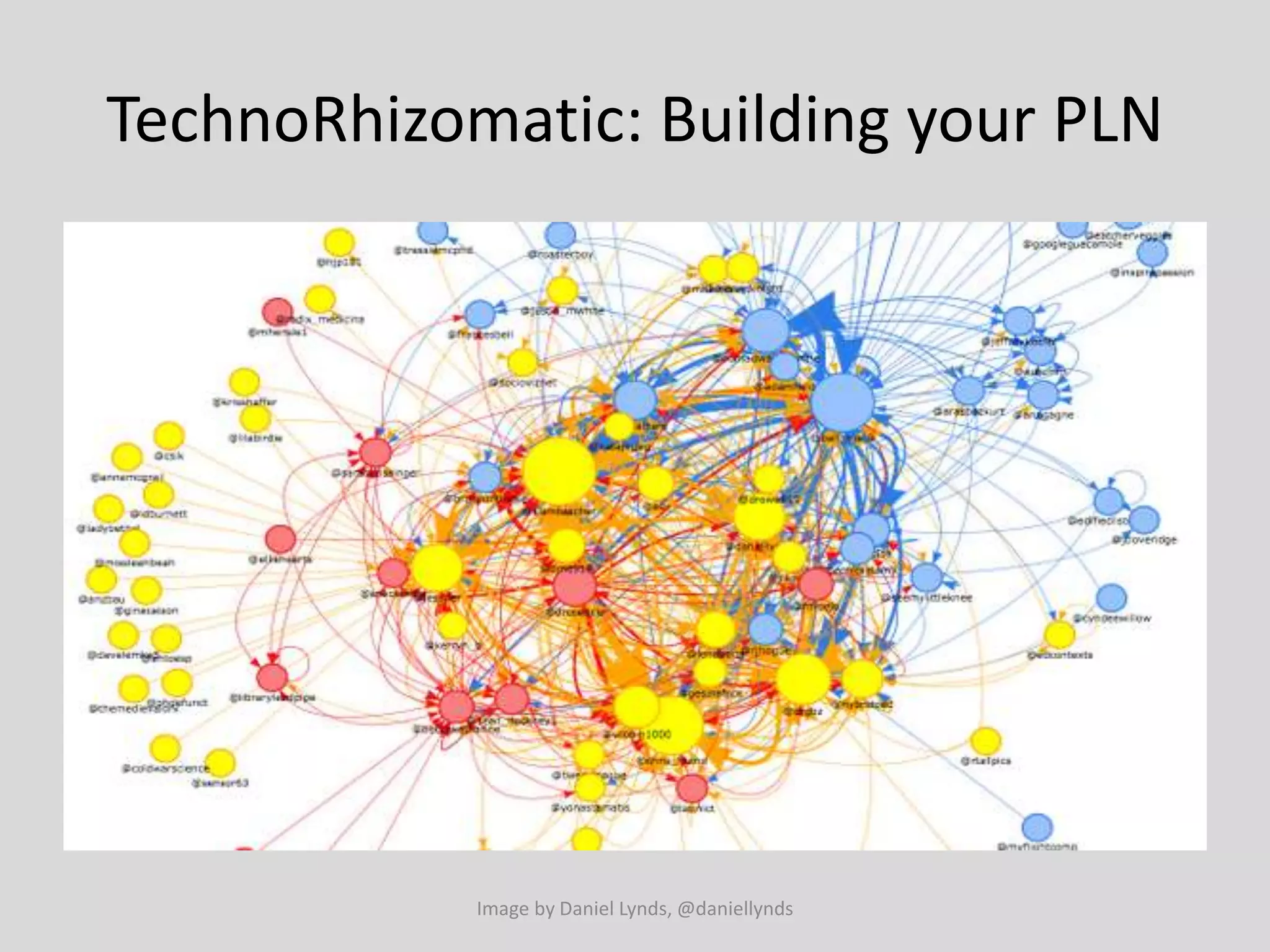
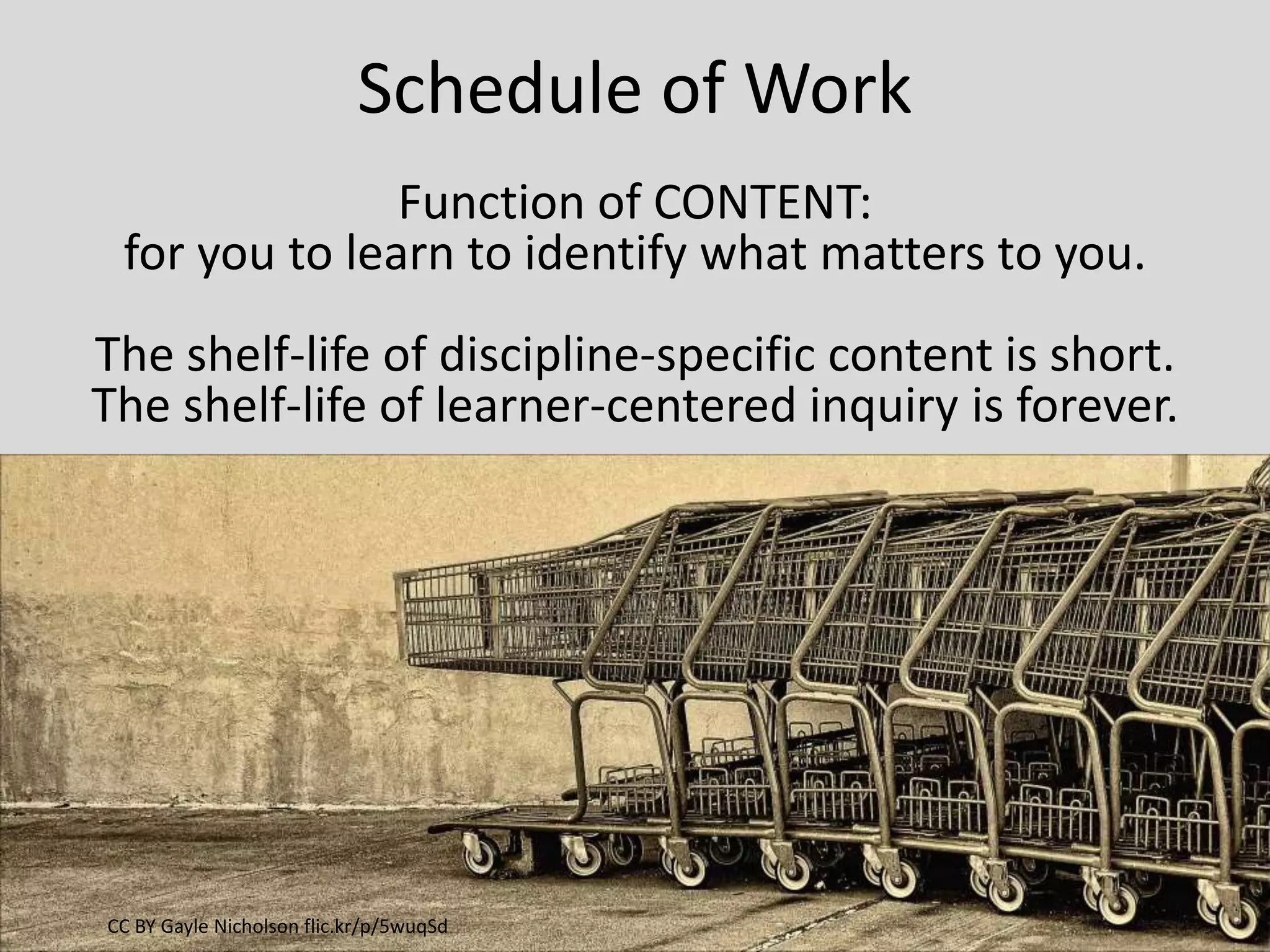
![CONTENT as
Dynamic
“The amount of
knowledge in the world
has doubled in the past
10 years and is [now]
doubling every 18
months…To combat the
shrinking half-life of
knowledge,
organizations have been
forced to develop new
methods of deploying
instruction.”
~Cathy Gonzalez
www.learningsolutionsmag.com/articles/1692/decrease-in-knowledge-shelf-life-makes-performance-support-mandatory
CCBY Kevin Dooley flic.kr/p/5ttM97](https://image.slidesharecdn.com/forstudentsondayone-150901003126-lva1-app6892/75/Intro-to-Open-Pedagogy-For-STUDENTS-14-2048.jpg)
